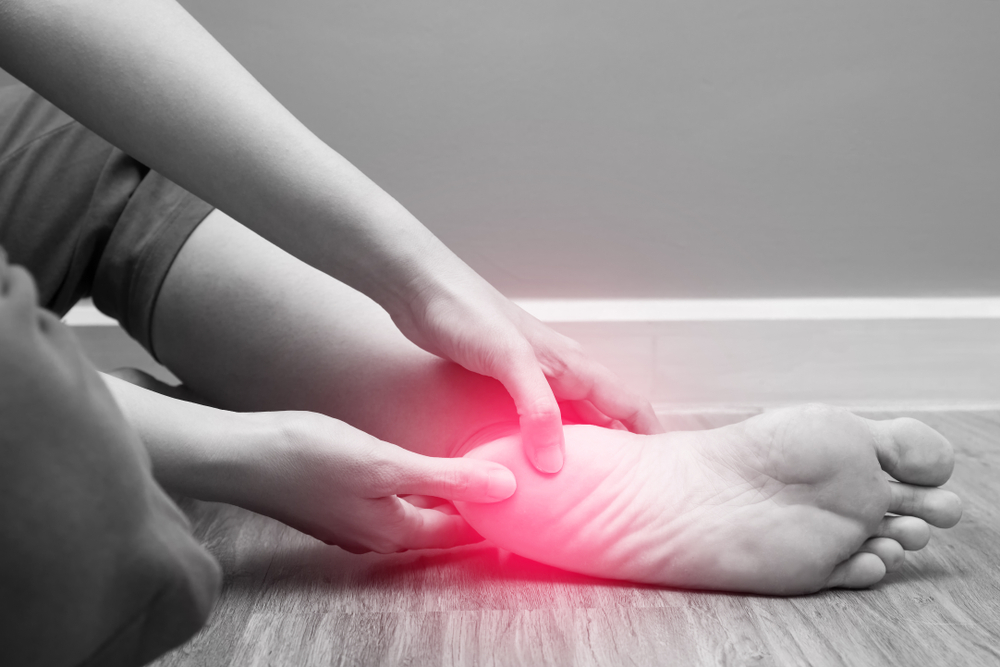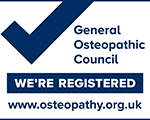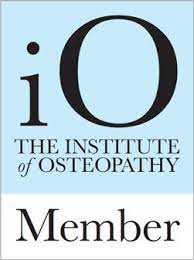If you suffer from Planter fasciitis you’ll know it as pain on the planter (underside) surface of the foot which is at its worst first thing in the morning. Symptoms typically eases with activity, and once warm you can exercise pain free but symptoms come back with a vengeance the following morning.
Planter fasciitis is an inflammatory and degenerative condition of the connective tissue on the underside of the foot. If poorly treated and left to become chronic it can be very stubborn and hard to get rid of. However understanding of this condition and the most effective forms of treatment has improved greatly over the last few years and now almost all cases can be treated conservatively ie: with manual therapy and exercise, avoiding the need to progress to injections and or surgery both of which have there own side effects and draw backs.
Planter fasciitis is often a running / sports injury but it can affect people from all walks of life including post partum mothers and office workers. The principles of treatment are the same for all, and just need to be adapted to your own individual activities and lifestyle.
Follow these five steps to effectively recovery from Planter Fascia pain
1 Reducing loading
This is the most important initial step in your recovery. For runners it means reducing millage or even temporarily stopping. Runners normally hate the idea of stopping, and that’s understandable, but it can be a choice between a short break followed by life long pain free running, or continual pain and gradually reducing ability to run.
For non-runners reducing load can mean less walking and especially less walking in hard footwear, losing weight and replacing weight bearing high impact exercise with non-weight bearing lower impact work.
Hard dress-shoes are often a culprit for office workers, as is unsupportive or minimalist footwear for runners. Therefor softer more supportive footwear can play an important part of the unloading process. If you have to wear dress shoes for work then put them in your bag and use trainers for you commute to and from the work place. Once there simple gel heal pad to reduce pressure and impact is in many cases as effective as more expensive tailor made orthotics. Start with this first and can always go for the more expensive option later if needed.
2 Alternative activities
With all this reducing of load its important to remember that exercise is important for healing and overall health, and that maintaining or moving towards a healthy weight can be a factor in reducing load.
It is therefore important to replace the reduced running, walking and weight bearing exercise with other activities to maintain health and promote healing while reducing pressure/ load on the planter fascia. Swimming and cycling make excellent alternatives.
4 Manual Therapy
Manual therapy can help to increase healing, aid recovery and reduce incidents of re-injury. These benefits occur through a number of mechanisms; manual therapy encourages metabolic turn over of connective tissue aiding healing, it also encourages the alignment of collagen along the lines of mechanical stress leading to healthier, stronger and more efficient connective tissue as well as reducing aberrant cross linking in surrounding connective tissues to reduces compressive forces through connective tissue to improve movement.
Manual therapy has been shown to be effective in the treatment of planter fasciitis. Soft tissue mobilisation has been shown to be unquestionably beneficial (link to study) , whereas results in studies of joint mobilisation have shown some benefit but with more mixed (link to study). This is probably best taken as an indication that the joint mobilisations need to be carefully selected and skilfully applied in order to get the desired results.
5 Progressive strength loading of the planter fascia
This is the big one! All the preceding tips were laying the ground work for this vital step. The real key to planter fascia injuries is long term strengthening and progressive loading. This builds strength and resilience into the tissues and reduces sensitivity through progressive exposer (link to study).
Specific exercises to load the planter fascia are most important, secondarily exercises to increase ankle and hip strength can also be beneficial in reducing loading/ improving the bodies ability to effectively absorb forces, this is especially true for runners and sporting populations and people with previous injuries
Conclusion
Following these five steps is the bedrock of effective treatment and long-term relief of planter fascia pain. Connective tissue changes occur over a long period of time so it is essential to keep up the exercises for months, even if your symptoms resolve within weeks.
Any questions related to this or other injuries / pain please don’t hesitate to get in touch.
Online bookings available here , or if you just have some questions or want more information please don’t hesitate to get in touch.
References:
1) Pollack, Y. et el., 2017. Manual therapy for planter heal pain, The Foot (Vol 34 March 2018 pages 11-16)
2) Ajimsha, S. et el., 2014. Effectiveness of myofascial release in treating planter heal pain, The Foot (Vol 24 June 2014 pages 66-72)
3) Rathleff, MS. et el., 2014. High load strength training improves outcomes in patients with planterfasciitis: a ramdonized controlled trial with 12 month follow up, Scandinavian journal of medicine and science in sport (vol 25 June 2015 pages 292-300)
4) Gelberman R H, Woo S L-Y, Lothringer K, Akeson WH, Amiel D 1982 Effects of early intermittent passive mobilization on healing canine flexor tendons. Journal of Hand Surgery 7(2):170–175
5) Savio S L-Y, Gelberman R H, Cobb N G, Amiel D, Lotheringer K, Akeson W H 1981 The importance of controlled passive mobilization on flexor tendon healing. Acta Orthopaedica Scandinavica 52:615–622
Bibliography
1. Gelberman R H, Woo S L-Y, Lothringer K, Akeson WH, Amiel D 1982 Effects of early intermittent passive mobilization on healing canine flexor tendons. Journal of Hand Surgery 7(2):170–175
2. Savio S L-Y, Gelberman R H, Cobb N G, Amiel D, Lotheringer K, Akeson W H 1981 The importance of controlled passive mobilization on flexor tendon healing. Acta Orthopaedica Scandinavica 52:615–622
3. Buckwalter JA, Grodzinsky AJ 1999 Loading of healing bone, fibrous tissue, and muscle: implications for orthopaedic practice. J Am Acad Orthop Surg 7(5):291-9
4. Montgomery RD 1989 Healing of muscle, ligaments, and tendons. Semin Vet Med Surg (Small Anim) 4(4):304-11










